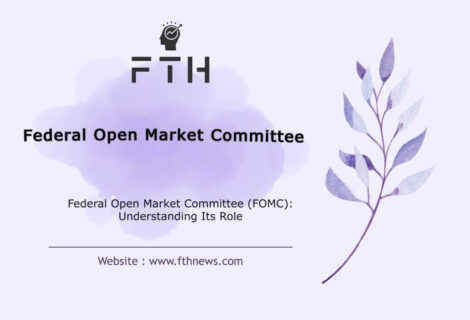
Quantitative Easing: What is it and How Does it Affect Economies?
In the intricate dance of economic recovery, nations often turn to a repertoire of policies, ranging from conventional approaches endorsed by prominent economists to more unconventional strategies deemed necessary in times of crisis. Quantitative Easing, a term that resonates in economic discussions, falls into the latter category.
Quantitative Easing (QE) stands as an unconventional monetary policy where a country’s central bank engages in the purchase of securities. The primary goal is to drive down interest rates, augment the money supply, and foster increased lending to businesses. This strategic move aims to invigorate economic growth during challenging periods.
In this article, we delve into the intricacies of Quantitative Easing—how it functions, its historical applications, and its impacts on various facets of the economy, including the market and inflation. Join us on this journey as we explore the nuances of this unconventional monetary tool.
Understanding Quantitative Easing: A Monetary Strategy
Quantitative Easing (QE) stands as a strategic move employed by certain central banks, including the Federal Reserve, to navigate economic challenges. In essence, QE involves the central bank purchasing securities with the dual aim of reducing interest rates and bolstering the money supply, thereby providing crucial support to customers and businesses. This monetary tool is strategically wielded to incentivize economic activities during financial crises, ensuring the continued circulation of credit.
When a central bank opts for a Quantitative Easing policy, it engages in substantial purchases of financial assets such as corporate bonds and, in some cases, even stocks. Despite its seemingly straightforward nature, this decision yields efficient results. The increase in the money supply, for instance, contributes to a reduction in interest rates. Simultaneously, by lowering borrowing costs, Quantitative Easing creates a conducive environment for overcoming sluggish economic growth.
Crucially, the central bank’s focus on purchasing long-term securities is designed to influence long-term market interest rates—a departure from the conventional interest rate policy that typically targets short-term rates. In the usual practice, when the Federal Reserve sets its target for the federal funds rate, it aims to influence short-term rates that banks charge each other for overnight loans. This interest rate policy has been a staple for decades in keeping credit flowing and fostering economic growth.
However, during the Great Depression, when the Fed funds rate hit zero, limiting further rate reductions, the Federal Reserve turned to Quantitative Easing. The central bank, at that critical juncture, purchased mortgage bonds and treasury bonds on a significant scale to prevent economic stagnation.
William English
William English, a professor at the Yale School of Management and former director of the Federal Reserve Monetary Affairs Division, sheds light on this transition. Before the financial crisis, the Federal Reserve primarily employed small-scale, daily open market operations to maintain the federal funds rate close to a target level. This operation was limited and temporary. Quantitative Easing, on the other hand, operates on a grander scale, impacting long-term yields. Notably, the assets predominantly acquired by the U.S. Federal Reserve include long-term treasury bonds or mortgage bonds issued by entities such as Ginnie Mae, Fannie Mae, or Freddie Mac.
the Mechanics of Quantitative Easing
Quantitative Easing operates through large-scale asset purchases, a powerful tool wielded by central banks, notably demonstrated during the response to the challenges posed by the COVID-19 pandemic. A prime example is the Federal Reserve’s strategic acquisition of Treasury bonds and long-maturity commercial bonds. Here’s a breakdown of how this process reshapes economic conditions:
1. Asset Purchases by the Federal Reserve:
The Federal Reserve initiates Quantitative Easing by creating money, expanding bank reserves on its balance sheet. In practice, this involves using these reserves to purchase substantial quantities of long-term Treasuries from major financial institutions in the open market.
2. Inflow of New Money into the Economy:
The consequence of this strategic move is an influx of cash into the accounts of financial institutions. This surplus can be held, lent to customers or businesses, or utilized to acquire other assets, fostering liquidity within the financial system.
3. Increasing Liquidity in the Financial System:
The injection of money serves a crucial purpose—preventing disruptions in the financial system. By averting credit contractions and modifying borrowing criteria, this action ensures the smooth operation of financial markets.
4. Lower Interest Rates:
The Federal Reserve’s substantial purchases of Treasuries and fixed-income assets have a profound impact on the market. Bond prices ascend due to increased demand, causing yields to decline. Lower interest rates, in turn, make borrowing more affordable, encouraging consumers and businesses to borrow, thereby stimulating economic activity.
5. Change in Asset Allocation by Investors:
As fixed-income assets experience diminished yields, investors are inclined to explore higher-yielding alternatives, such as stocks. This shift in asset allocation can contribute to enhanced profitability across the entire stock market, a ripple effect of Quantitative Easing.
6. Boosting Confidence in the Economy:
Beyond the immediate financial implications, Quantitative Easing serves as a confidence-restoring mechanism. The Federal Reserve’s actions instill confidence in the broader market and economy. This renewed confidence prompts businesses and consumers to engage in borrowing, invest in the stock market, expand hiring, and increase spending—collectively acting as a catalyst for economic stimulation.
A Historical Perspective: Quantitative Easing Across the Globe
In recent years, quantitative easing has emerged as a pivotal strategy for fostering economic prosperity, with notable applications in emerging economies such as the Philippines, Indonesia, and South Africa. However, it is the implementation of quantitative easing in major economies like the United States, Japan, and several European nations that has garnered significant global attention.
Bank of England:
A standout example is the Bank of England’s response to the 2009 financial crisis when it embarked on a (QE) policy by purchasing £200 billion in bonds. This strategic measure proved effective and has been employed on multiple occasions since, including the acquisition of £895 billion in bonds in 2020 in response to the economic slowdown induced by the COVID-19 pandemic.
Bank of Japan:
The Bank of Japan stands out as one of the boldest proponents of (QE), having implemented this policy for over a decade. Their proactive approach to injecting liquidity into the economy has been a defining feature of their economic strategy.
European Central Bank:
In the aftermath of the global financial crisis in 2007, the European Central Bank also turned to (QE) as a means of stabilizing the economy.
Federal Reserve (United States):
The Federal Reserve of the United States entered the realm of (QE) in 2008 to combat the Great Recession. Then-Federal Reserve Chairman Ben Bernanke, drawing on Japan’s prior experience with quantitative easing, orchestrated asset purchases exceeding $4 trillion in three distinct phases between 2009 and 2014.
Reflecting on the Federal Reserve’s initial foray into quantitative easing during the financial crisis, Luke Tilly, Chief Economist at Wilmington Trust and former economic adviser to the Federal Reserve Bank of Philadelphia, observed that policymakers predetermined the amount and duration of purchases. This deliberate approach, Tilly noted, was driven by the novelty of the method, as policymakers grappled with uncertainties surrounding market reactions.
The historical records underscore the global significance of quantitative easing, showcasing its adaptability across diverse economic landscapes and its instrumental role in steering nations through periods of economic turbulence.
Quantitative Easing’s Influence on Inflation: A Balancing Act
Quantitative Easing serves as a crucial tool to mitigate the risks of recession, promoting economic stability that benefits the broader population. At its core, this strategy facilitates economic resilience by simplifying borrowing processes, allowing businesses to thrive, invest, and generate employment opportunities.
The mechanism of Quantitative Easing involves the central bank’s purchase of government bonds. As these bonds are acquired, their prices rise, leading to a decrease in their yield—the interest rate paid to bondholders. This interest rate, known as bond yield, plays a pivotal role in shaping other borrowing rates across the economy.
Lower bond yields translate to reduced borrowing costs. Quantitative Easing, therefore, becomes a catalyst for encouraging households and businesses to borrow, spend, and invest in various ventures. For instance, the impact is evident in the housing market, where lower yields on government bonds result in decreased interest rates on fixed-rate mortgages. This, in turn, makes home loans more affordable, fostering increased activity in the real estate sector.
Moreover, the influence of Quantitative Easing extends to long-term government bonds with maturities of 10 years or more. By making long-term investments more cost-effective, this strategy further promotes borrowing and expansion among businesses.
A crucial aspect of Quantitative Easing lies in its signaling effect. When a central bank employs this strategy, it indicates an intention to maintain its policy interest rate at a low level for an extended period, as long as inflation remains under control. This commitment to low policy interest rates serves to decrease long-term borrowing costs for both businesses and households, contributing to the overall economic stability. Quantitative Easing, therefore, emerges not only as a response to economic challenges but also as a proactive measure to shape and support the borrowing landscape.
the Impact of Quantitative Easing on Markets and Economies
Understanding the consequences of quantitative easing on financial markets involves anticipating certain outcomes, as noted by William English. In his analysis, he highlights the expected results, stating that unless unforeseen events occur, quantitative easing typically leads to a decrease in long-term interest rates, an upswing in stock prices, and a depreciation of the dollar against foreign currencies.
English emphasizes that these effects mirror the implications of traditional Federal Reserve policies but on a larger scale. Importantly, the reduction of quantitative easing produces the reverse effect—increasing long-term rates and decreasing stock prices.
However, markets sometimes react unexpectedly, as seen in the 2013 phenomenon known as the “Taper Tantrum.” During this episode, the mere announcement of the Federal Reserve’s intention to scale back its quantitative easing program led to a rapid increase in bond prices and a temporary decline in stocks.
Nicole Tanenbaum, Chief Investment Strategist at Checkers Financial Management, recalls the panic and rising interest rates during this period. Investors were initially concerned that the economy might falter without continuous support from the Federal Reserve. Fortunately, stability returned, and a recession was averted when investors realized the Fed had only signaled its intention to taper, eventually increasing its purchases. This underscores the influence of market sentiment on reality, particularly in the context of quantitative easing.
Bill Merz, Director of Fixed Income Research at U.S. Bank Wealth Management, underscores the powerful message central banks convey through quantitative easing. By signaling their willingness to persistently buy assets to maintain low interest rates, central banks, such as the Federal Reserve, aim to stimulate economic growth. This signaling, according to Merz, stands as the most influential aspect of quantitative easing, exerting a profound impact on capital markets and asset prices.
Exploring the Pros and Cons of Quantitative Easing
The adoption of quantitative easing as an economic policy brings with it a set of advantages and disadvantages, each playing a significant role in shaping its overall impact.
Possible Benefits and Positive Consequences:
More Lending:
Encouraging Capital Flow: Quantitative easing prompts banks to increase lending as their capital expands through the central bank’s asset purchases.
Increased Borrowing:
Low Interest Incentive: Lower interest rates resulting from quantitative easing make new loans more appealing to both consumers and businesses.
More Spending:
Stimulating Consumption: The uptick in lending and borrowing injects more money into the economy, encouraging consumers to spend, as saving in low-interest environments becomes less attractive.
Job Growth:
Business Expansion: Access to increased capital through loans incentivizes businesses to expand operations and hire additional employees.
Possible Disadvantages and Negative Consequences:
Inflation:
Risk of Price Surge: The surge in money supply from quantitative easing can lead to inflation, driven by increased competition for goods without a corresponding rise in supply. Mismanagement of this dynamic may escalate into hyperinflation.
No Obligation to Lend:
Lack of Enforcement: While commercial banks are expected to increase lending with the funds received through quantitative easing, there is no inherent obligation compelling them to do so. Instances, such as post-2008, saw banks holding onto funds rather than deploying them for increased lending.
More Debt:
Borrowing Risks: The allure of enhanced borrowing benefits may lead businesses and consumers to take on more debt than they can manage, potentially resulting in adverse economic consequences.
Impact on Other Investment Instruments:
Market Volatility: The bond market often reacts negatively to the volatility and abrupt shifts associated with quantitative easing policies, creating challenges for investors in this arena.
Not Useful for Everyone and Asset Bubble Risks:
Uneven Economic Stimulus: Critics question the effectiveness of quantitative easing, particularly its ability to uniformly stimulate the economy. The policy may contribute to asset bubbles, particularly in the stock market, and can accentuate income inequality.
Possibility of Income Inequality:
Widening Disparities: Quantitative easing, affecting both financial assets and real estate, may exacerbate income inequality. Those benefiting from rising asset prices during such conditions tend to be those who are already economically prosperous.
In evaluating the merits and drawbacks of (QE), it becomes evident that the policy is a nuanced tool with the potential for both positive and negative consequences, requiring careful consideration and management.
Quantitative Easing Process Unveiled:
Setting Targets:
The central bank determines its objectives, typically centered around boosting economic growth, reducing unemployment, and controlling inflation.
Determining Easing Amount:
Analyzing economic conditions, the central bank decides on the amount by which it intends to increase the money supply.
Implementation:
The central bank initiates the quantitative easing process by purchasing securities, such as government bonds, from banks and financial institutions. This injects new money into the market.
Market Impact:
With the increased money supply, interest rates decline, serving as a stimulus for investment and consumption.
Conclusion of Quantitative Easing:
The central bank concludes quantitative easing when its goals are met. This may involve reducing bond purchases or adjusting interest rates.
In summary, the (QE) policy encompasses setting objectives, determining the easing amount, implementing the strategy, observing its impact on the market, and concluding the process, serving as a tool to stimulate the economy.
Conclusion: Navigating the Contours of Quantitative Easing
In the realm of monetary policies, (QE) stands out as a strategy employed by certain central banks to invigorate economic growth. The mechanism involves the purchase of long-term securities from the open market, aiming to bolster the money supply and stimulate lending and investment.
While (QE), alongside other unconventional monetary approaches, has shown promise in alleviating economic challenges for some nations, it remains a contentious strategy with both advantages and disadvantages.
The benefits are evident in its potential to enhance economic conditions by encouraging lending, fostering investment, and expanding the money supply. However, the controversy surrounding quantitative easing arises from its potential drawbacks. Some countries adopting this policy have grappled with currency instability and adverse effects on markets and other economic sectors.
It is crucial to acknowledge that the long-term consequences of quantitative easing are far from certain. The implementation of this strategy may yield varied results contingent upon the unique conditions of each country. As such, while (QE) has played a role in navigating economic uncertainties, its efficacy and broader implications underscore the need for careful consideration and ongoing evaluation. As the global economic landscape evolves, the debate surrounding the merits and pitfalls of (QE) remains an integral aspect of monetary policy discourse.
FAQ
Quantitative easing is when a central bank buys assets, like government bonds, to boost the economy by increasing money supply and encouraging lending.
Quantitative easing has both advantages and drawbacks, with potential benefits like stimulating economic growth and potential downsides like the risk of inflation and exacerbating income inequality. The assessment depends on various factors and perspectives.
While they are related, quantitative easing is not exactly the same as printing money. Quantitative easing involves the central bank buying financial assets, such as government bonds, to increase the money supply and stimulate the economy. Printing money, on the other hand, refers to the literal act of creating new physical currency. Quantitative easing is a more complex process that typically involves digital transactions and the central bank’s purchase of assets, rather than a direct printing of physical money.














